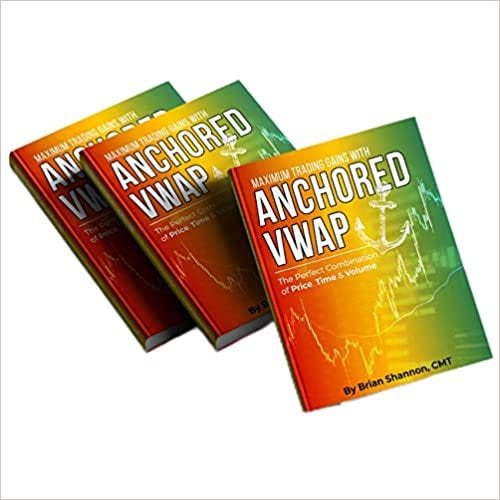Seven Agents Want My Book Proposal!
This is a very good sign, but just the beginning of a long process
For those who haven’t been following along, you can start reading my series on writing a book proposal, starting with Part One, and Part Two. Those two back issues share some of the steps I took to finish my proposal for Back to Ohio: A Native Daughter’s Road Trip of Racial Reckoning.
In today’s newsletter I’ll talk about my experience at a live pitching event where I found seven agents who want to read my proposal. Then I’ll give an overview of other ways to find agents.
I met the eight agents at a live pitching event (like speed dating) with Writing Day Workshops earlier this month. Going into the event I said I would feel successful if three agents asked to read the proposal, but seven of eight made the request!
Why I Chose a Live Pitching Event
I chose the live pitching event because it plays to my strengths as someone who can think on her feet. I’ve had media training and have appeared on 100+ TV segments as a travel expert. This experience carries over to pitching my book in real time (over Zoom and Skype). If this kind of 1:1 scenario scares you, stick to email pitching.
Another reason I booked a pitch event is that I’m impatient. If I had queried these agents by email, they might not have even opened my query for three months. Add six or eight weeks to actually read the proposal, and we’re looking at five months minimum before I would have any indication of how the proposal was received. I wanted to shave three months off that process.
If none of these eight agents had asked to see my proposal on pitching day I would have gone back to the drawing board to write a better one. Live pitching is SO EFFICIENT!
Why does it take agents so long to open and read their email queries? The average literary agent gets hundreds of pitches each month, and reading them is not their priority—representing clients is. Query volume was lower when writers had to physically mail their manuscripts or book proposals to agents. Email has invited a lot of people into the game.
Next Steps
Four of the agents who requested my proposal were satisfied with the proposal as written, and one of them asked me to only send two sections from it. Three of them asked me to add one or two additional chapters, and I’ll send it to them then.
The classic scenario for finding an agent and then a publisher goes like this:
Agents will read my proposal. I might or might not hear from all of them.
Even if an agent likes the initial proposal, there’s a good chance they will have insights and suggestions for improving it. We will talk about those recommendations as part of the mutual process of figuring out if we would be a good team.
Once an agent and I decide to work together, I’ll modify the proposal per our discussion.
Once the agent feels the proposal is in good shape, their sales process begins.
Editors who are interested in a book usually have ideas on how to improve it. If I agree with the direction that a particular editor wants to take the project, my agent and I will consider their offer.
So far, this is five steps in the simplest scenario. It will take some time. Even with a rapid response from agents and editors, this book won’t see the shelves before 2025.
Just because seven agents are reading my proposal doesn’t mean I’m sitting at my screen refreshing my inbox. I’ll continue querying until an agent offers representation, and I am satisfied that we would work well together.
There is no reason to put anything from your writing life on hold during the querying process because there is so much uncertainty, and each step can take what feels like forever. Writers write. Keep writing.
For me, I will continue writing my Substack that’s dedicated to Back to Ohio while working on client books and other projects of my own.
How to Find Agents
There are books, blogs, podcasts, and courses dedicated to this topic. This is just an overview.
Once you’ve written your book proposal, you need to do the grunt work of researching agents 1) interested in the type of book you’re pitching and 2) open to queries.
One way to find prospective agents is by looking in the Acknowledgments section of the “comp titles” in your proposal, and the books you relied on for research. That should give you a good dozen prospects.
Next, look those agents up to see if they are open to queries. I like doing this through a website called Query Tracker, which also will list other agents who represents your genre. If you can’t find all the agents of interest to you on Query Tracker, go to their websites and see if they are open to queries. One of the features I most appreciate about Query Tracker is the ability to log all my activity with agents, including the cover letter/pitch/query I used, and when I sent it. I can even log activity with agents who aren’t on Query Tracker.
Another online tool for identifying potential agents is a website called Manuscript Wishlist. The good people there make searching drop-dead easy. Here is a screen shot.
The Manuscript Wishlist is a product of the Manuscript Academy, which offers a ton of resources to writers, including a podcast, courses, networking events, and writing consultations.
Components of a Good Pitch
The easy way to remember what you’ve got to include in a winning pitch is:
The Book (title, genre, page count).
The Hook1 (a one-sentence statement that grabs the agent’s attention and makes them want to read the proposal). After the hook you’ll give a quick overview of the book’s contents.
The Cook (who you are and what makes you the perfect author for this project).
There are loads of excellent resources on crafting a winning pitch. My favorite is the podcast with the sassy name, The Shit No One Tells You About Writing. The team behind the podcast is also here on Substack. Their focus is fiction, but there’s plenty to learn that also applies to nonfiction.
Writers Digest has dozens of articles that can help you with all aspects of the publishing process, including how to write an irresistible query.
Need some Help?
I’m available for consults on your book proposal, your query letter, and finding agents. Last year I worked on two different nonfiction books, described below. If you think I might have something to offer you and your project, just reach out here or on my website.
Two Old Broads
Two Old Broads: What You Need to Know that You Didn’t Know You Needed to Know is a self-help book about aging as an essay collection by Dr. Mary Ellen Hecht and Whoopi Goldberg. This hybrid form is not conventional, but admit it, you’d be disappointed if Whoopi bowed to convention.
Publisher Harper Horizons hired me to assist the authors in shaping the second and third (final) drafts of the book. We combined some essays, deleted others, and wrote new chapters to round out the book’s six parts: Broad Mentality, Broad Life, Broad Bones, Broad Well-Being, Broad Shoulders, and Broad Insights.
Maximum Trading Gains With Anchored VWAP
Maximum Trading Gains With Anchored VWAP: The Perfect Combination of Price, Time & Volume is a how-to book for traders and investors. Author Brian Shannon, CMT, had written little since his first book in 2008. He hired me to help him finish the first draft on time and then shape the book into two parts. I also managed the publishing project team of designers, a copy editor, and an indexer. I just checked his Amazon listing and see that 95% of his reviews are FIVE STARS.
Ask me anything!
If you think I might have something to offer, just reach out here or on my website.
Mine was “Easy Rider takes a History Professor for a spin along the Ohio River—plot twist: I’m the motorcyclist.”








